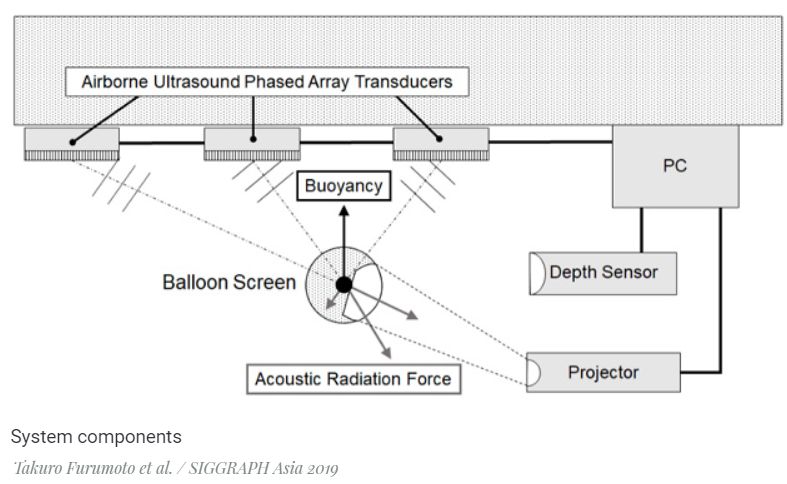A team of Japanese engineers have created a tangible interactive screen from a balloon, ultrasonic emitters and a projector. The projector displays an image on the ball and constantly monitors its position to displace the object. This allows you to move the ball with a projection with your hands.
Today, the interface field is dominated by touch screens and software interfaces designed to work with them. However, a considerable number of scientists continue to research and develop in the field of touch interfaces, through which a person interacts with the computer through tangible elements. Some studies show that touch interfaces are more intuitive, for example, increase learning effectiveness.
In virtual surround interfaces, such as virtual and augmented reality devices, elements often hover in the air. Some engineers have created tangible analogues of such I/O interfaces using drones, but this is associated with the difficulty of controlling devices and displaying High-resolution images.
Takuro Furumoto and his colleagues at the University of Tokyo created a tangible flying interface based on a balloon. Inside it is a mixture of helium and air. Above the ball are several arrays of ultrasonic emitters that exert little pressure on the ball. The ratio of helium to air was chosen in such a way that, taking into account the pressure of the emitters, the ball had neutral buoyancy and was at the same height.
Ultrasonic emitters can not only support the ball in one place, but also move it within the work area, changing the distribution of sound across the emitters. The user can also move the ball and put it in the right place.

The system also includes a projector with a refresh rate of 120 hertz, as well as a Microsoft Kinect depth camera. They are pre-calibrated so that the projection of the image on the ball is always in its centre, and also has the same shape and size, regardless of the distance between the ball and the projector. It is also possible to display a 3D image on the ball, but in this case, the user must put on shutter 3D glasses, which quickly alternately darken the right and left eyes.
